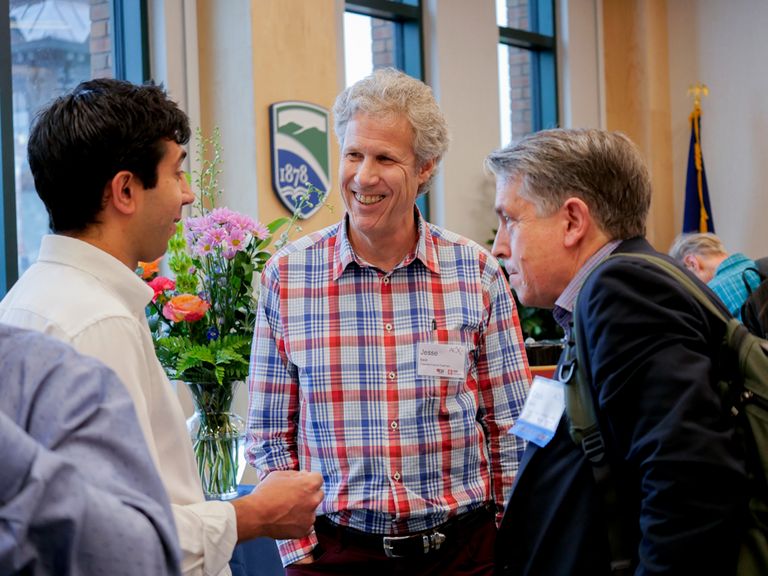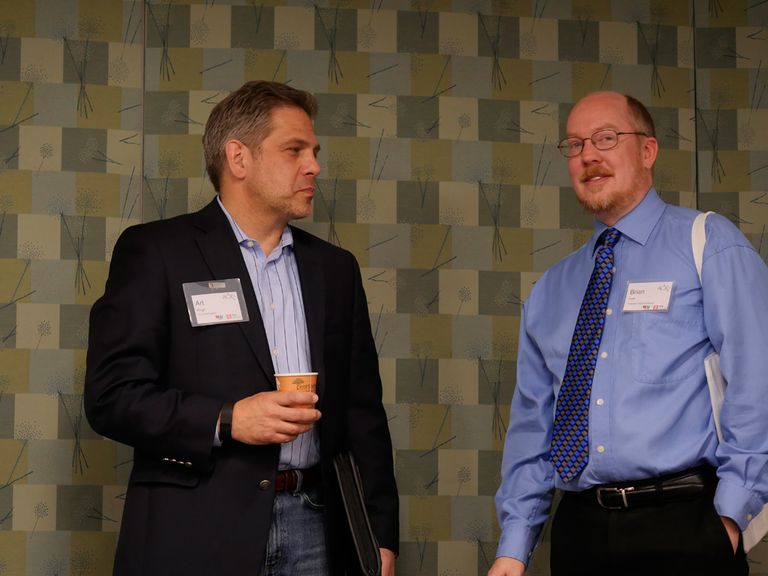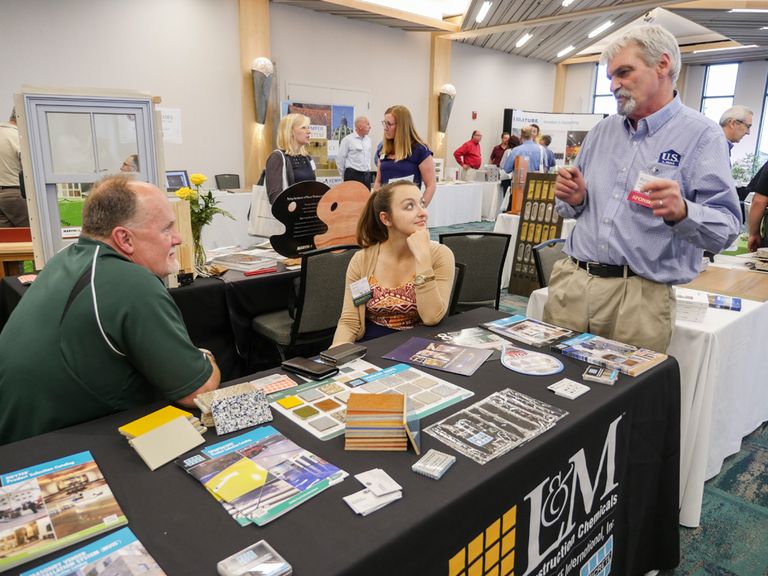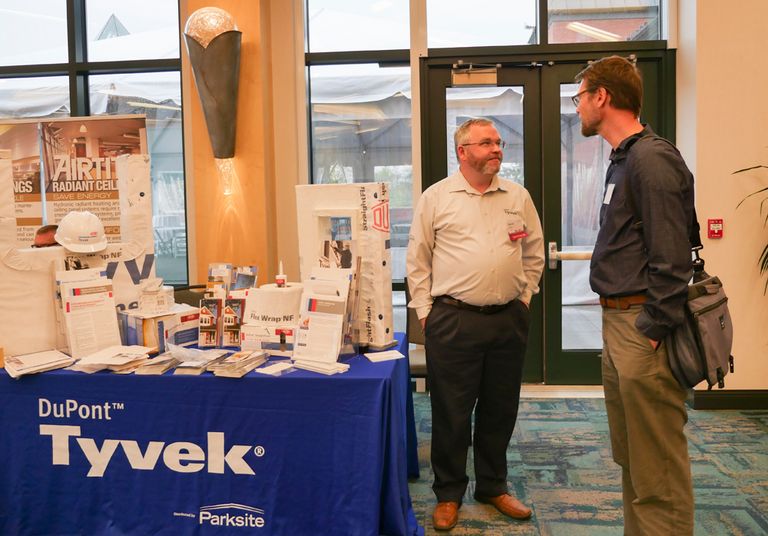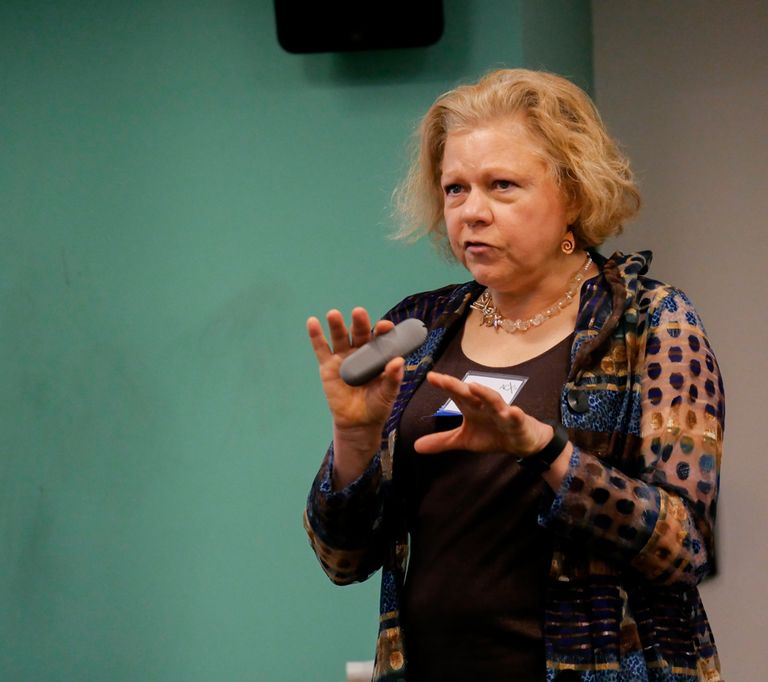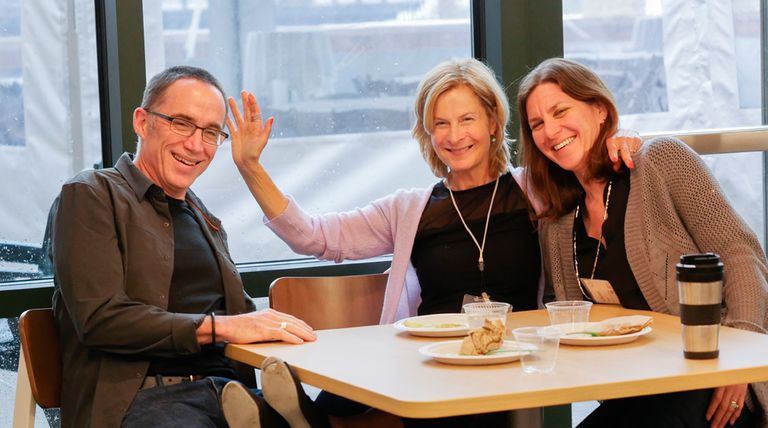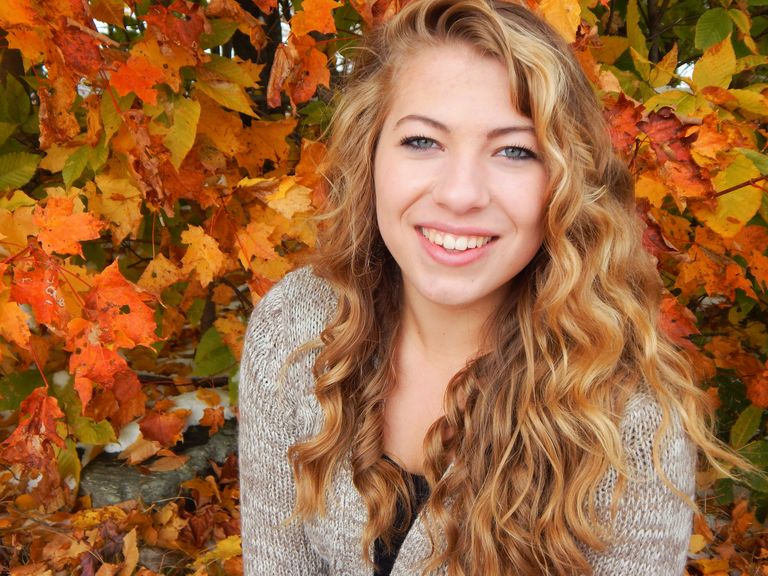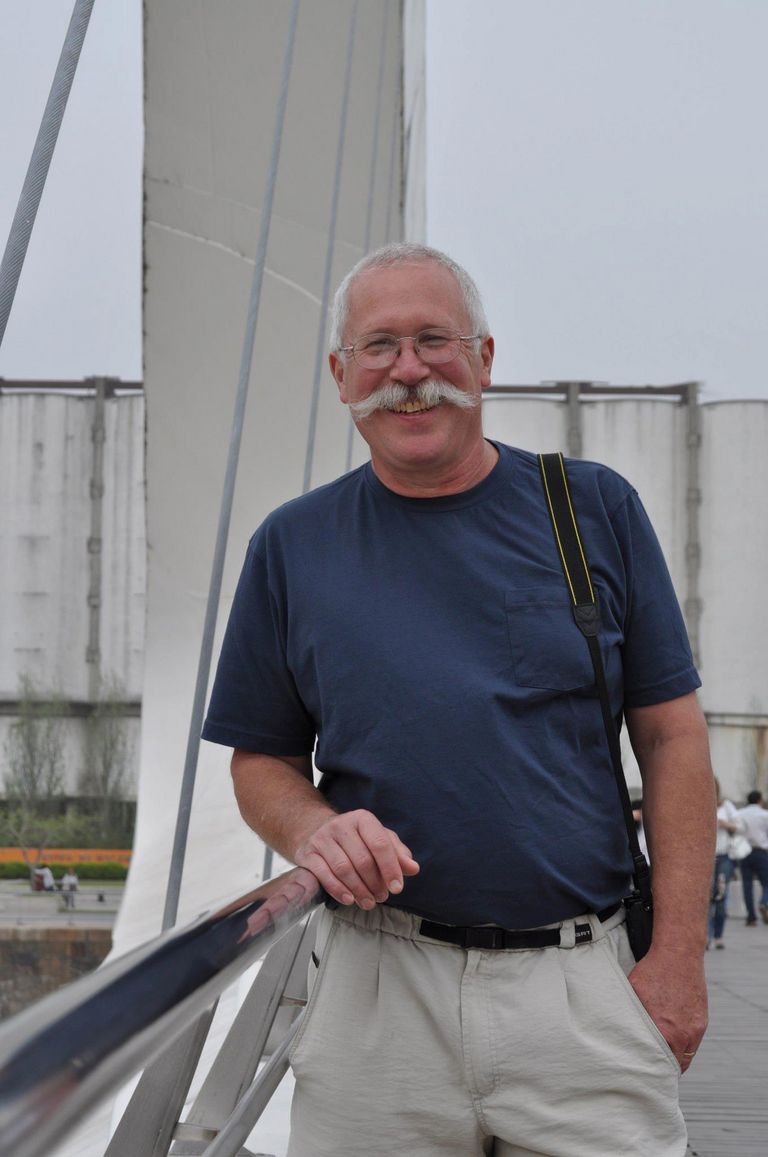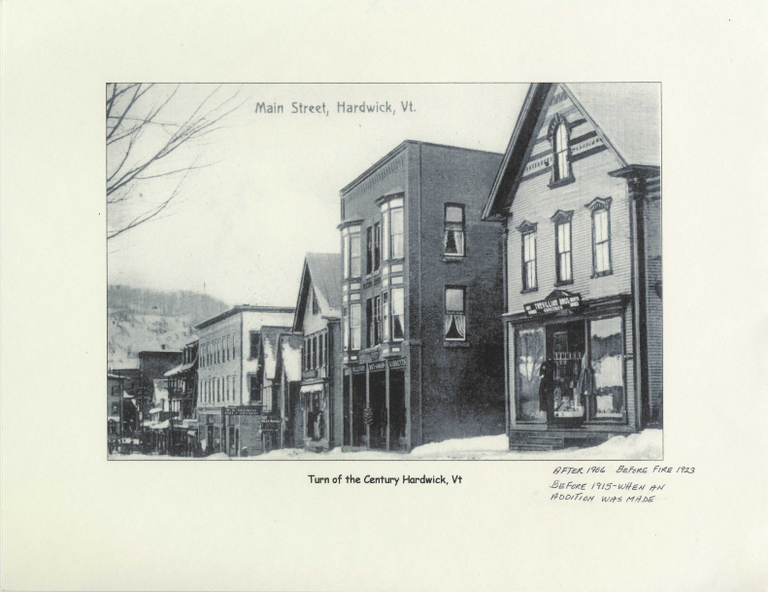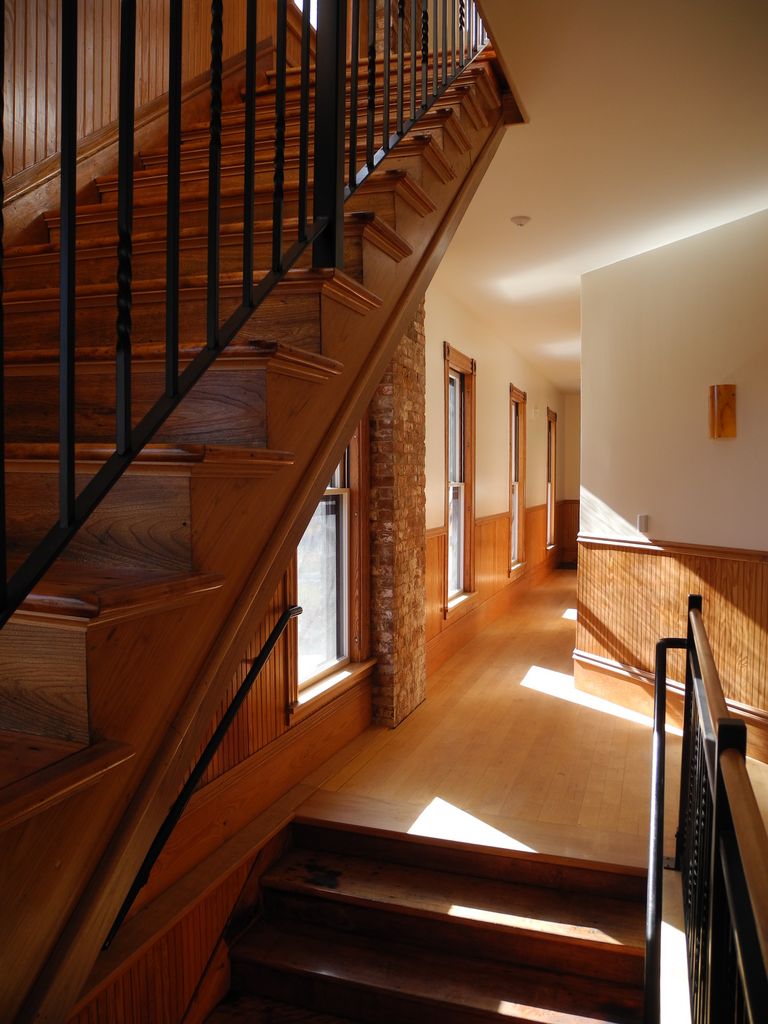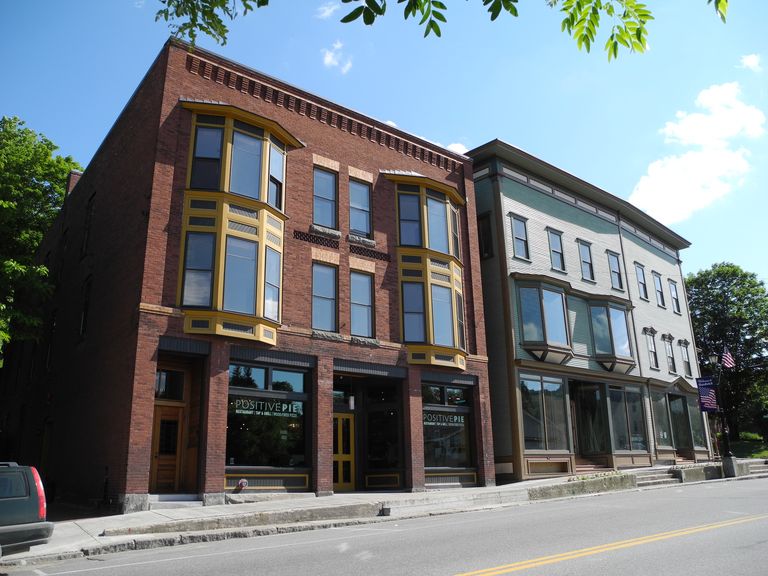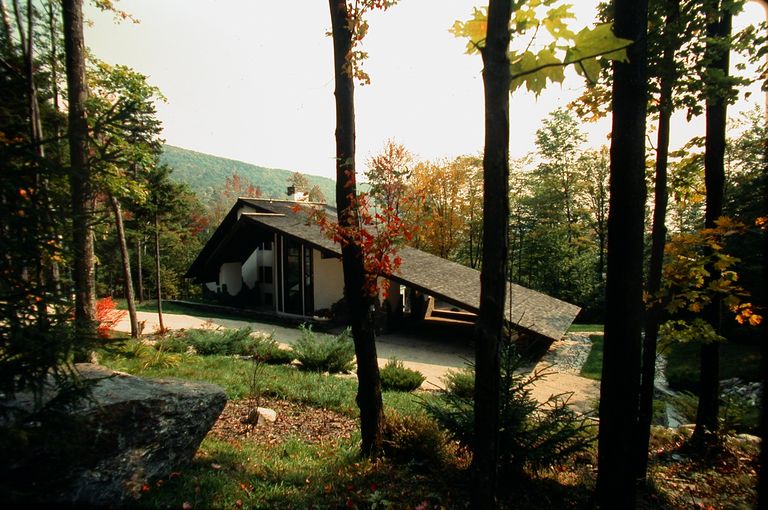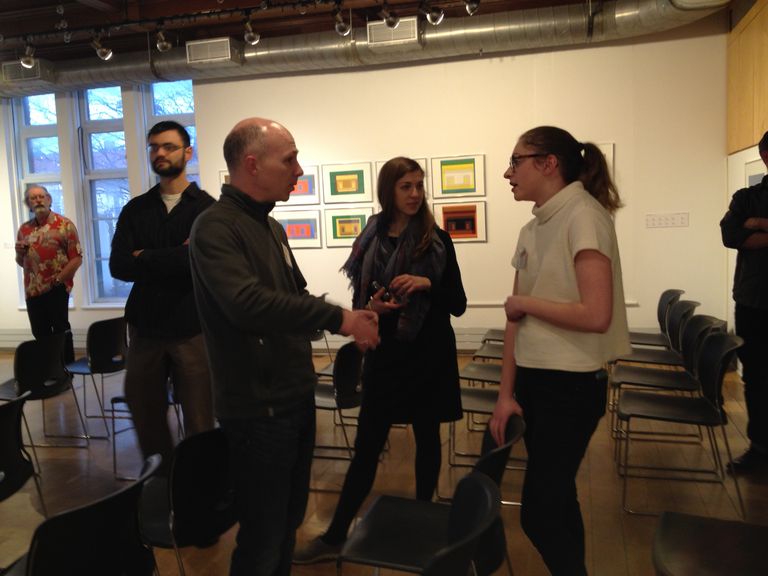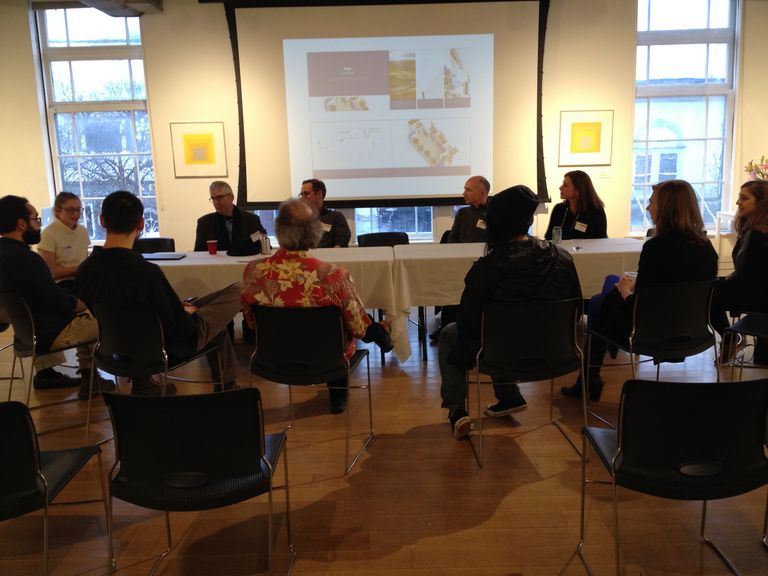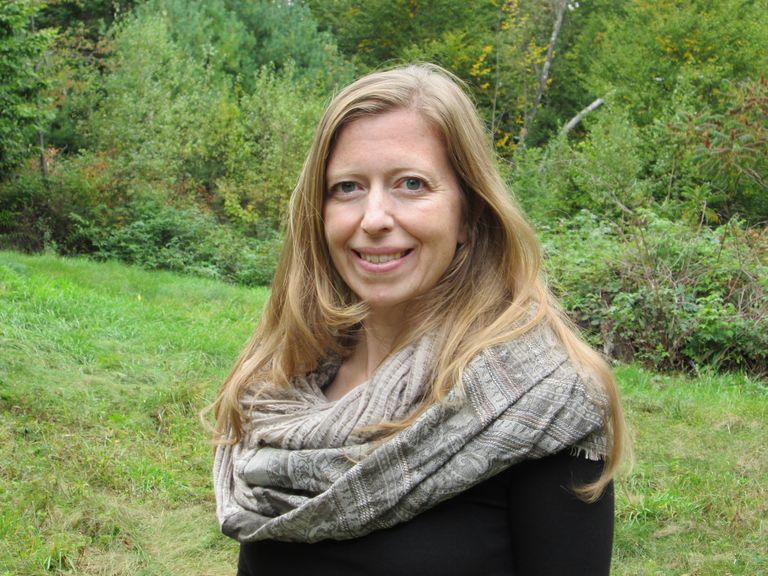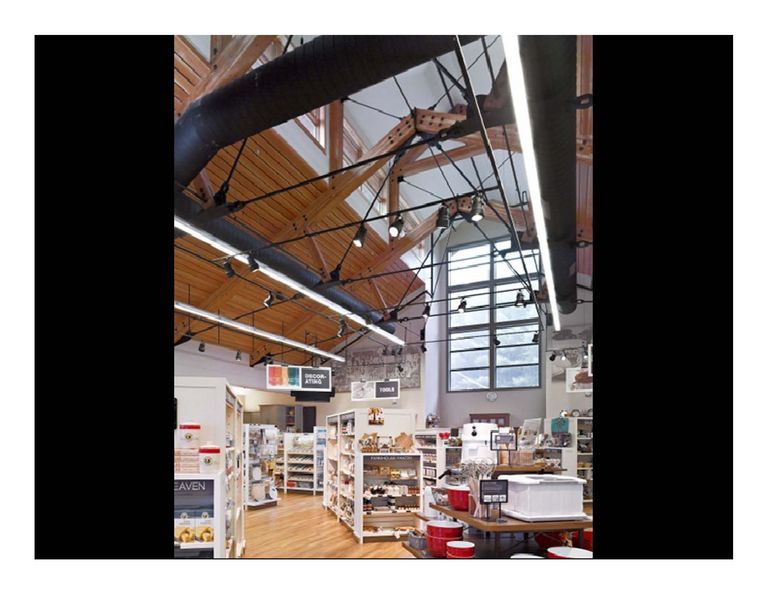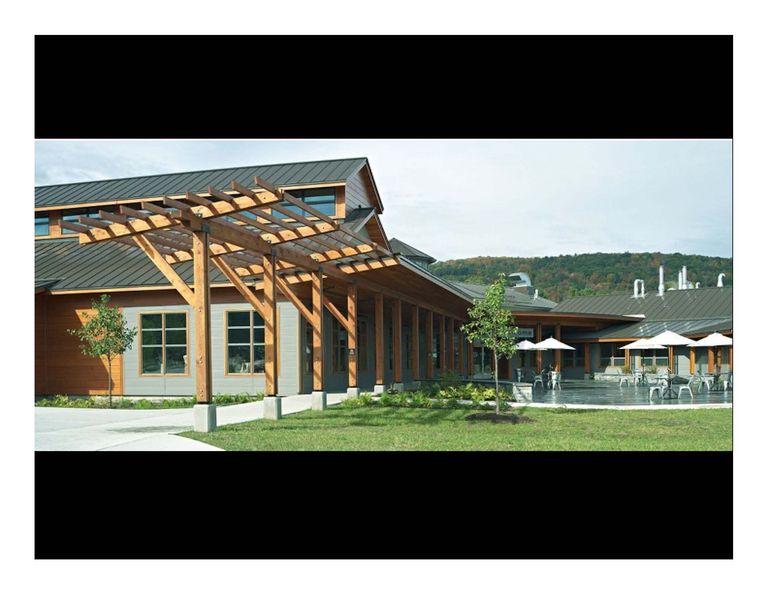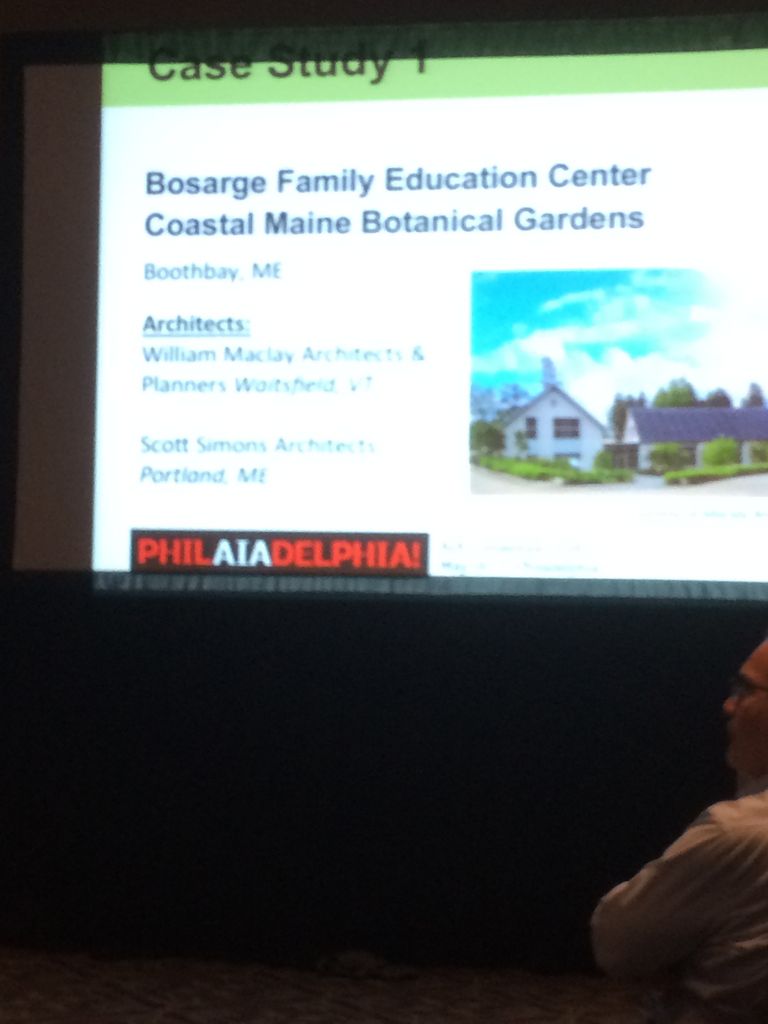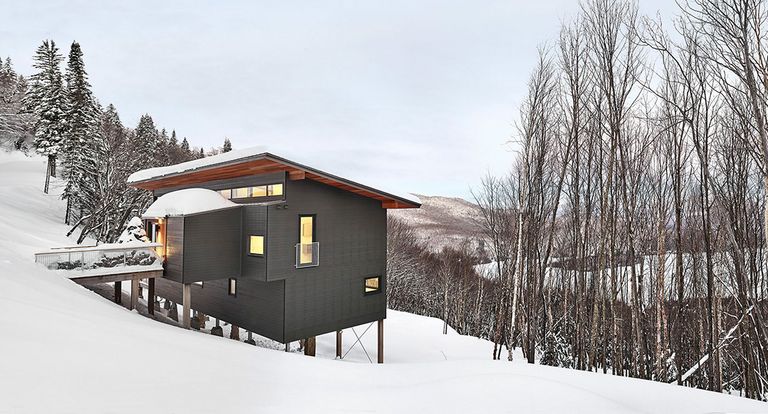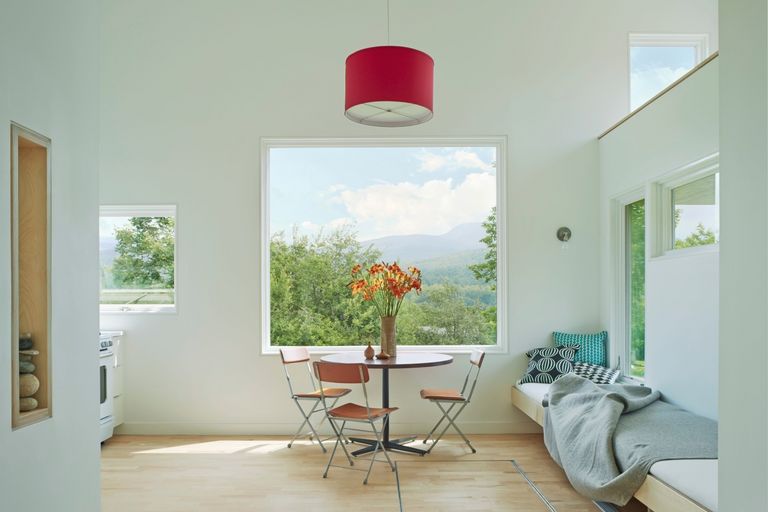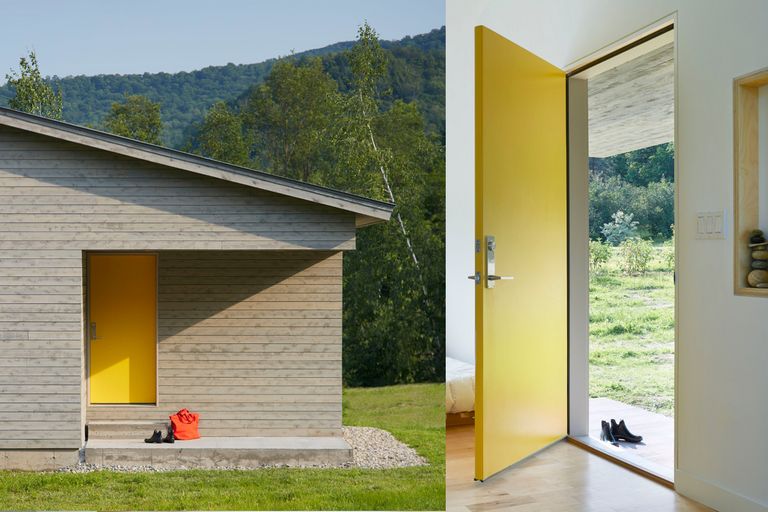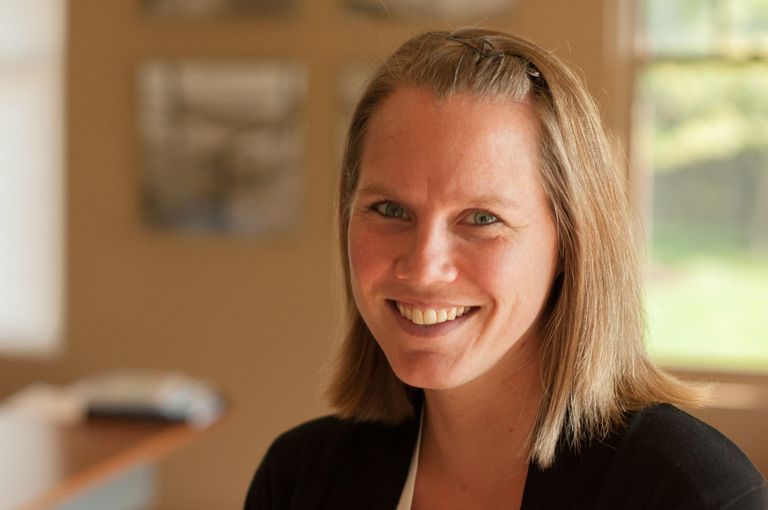7.16 AIAVT News
ACX 2016 Conference Focused on Health & Evidence-Based Design
AIAVT and the Construction Specifications Institute (CSIVT) presented ACX 2016—Vermont’s Architecture & Construction Expo—at Champlain College, Burlington, Vermont on Friday, May 13, 2016. More...
Climate Responsive Design Topic of Online Presentation Hosted by AIAVT
Picture this—it’s a beautiful, warm early summer evening and you’re inside staring at a projector screen. Since summers are short here in our state, AIAVT thus commends the attendees and sponsors that put global greenhouse gas emission reduction before after-work recreation and attended Course 3 in the AIA+2030 Challenge Online Series. More...
Net Zero Vermont Launches Sustainable Montpelier 2030 Design Competition
Net Zero Vermont, Inc., an independent nonprofit dedicated to fostering a sustainable future for Vermont, is launching a nationwide architectural design competition More...
Efficiency–Related Product Videos Now on YouTube—Courtesy of Vermont Architect
Have you ever wished you could give your client a better idea of what an HRV, ZIP panel or vapor retarder is? Look no further. Now you can send them a link to a video on YouTube More...
AIAVT Announces Vermont Scholar Promise Award Recipients
AIAVT is pleased to announce the recipients of its 2016 Vermont Scholar Promise Awards. More...
ACX 2016 Conference Focused on Health & Evidence-Based Design
AIAVT and the Construction Specifications Institute (CSIVT) presented ACX 2016—Vermont’s Architecture & Construction Expo—at Champlain College, Burlington, Vermont on Friday, May 13, 2016. The focus was on research, wellness, health and evidence-based design.
The event attracted over 100 attendees from across the region, bringing together architects, engineers, contractors, manufacturers, business leaders and regulators. The new venue at Champlain College—with fabulous westerly views of Lake Champlain and the Adirondacks—got a big “thumbs up” from session attendees, presenters and exhibitors alike.
The sessions that were especially well received included the Keynote, “The Culture of Health” given by Alberto Salvatore and Breeze Glazer, Perkins + Will, Boston; “Evidenced-Based Lighting: Research We Can Use” given by Donna Leban, Light/Space/Design, Burlington; and “Functional Coloration” presented by Art and James Bemis, The Mastery Institute, Rutland.
Climate Responsive Design Topic of Online Presentation Hosted by AIAVT
By Joel Page, AIA and Carol Miklos
Picture this—it’s a beautiful, warm early summer evening and you’re inside staring at a projector screen. Since summers are short here in our state, AIAVT thus commends the attendees and sponsors that put global greenhouse gas emission reduction before after-work recreation and attended Course 3 in the AIA+2030 Challenge Online Series. Held at Contois Auditorium in Burlington on June 30, the evening’s course, "Accentuate the Positive: Climate Responsive Design," focused primarily on the local environmental factors that impact a building’s design and function. As one presenter expressed, “energy efficient design embraces the climate when beneficial, and minimizes unwanted environmental conditions.”
The course addressed a pretty well known fact in the design community: all buildings—wherever they may be built—are affected by the local climate, weather, and solar orientation. This truly is significant as relates to the long-term performance of a building and its occupants’ comfort—and what is new is that there are more and more metrics and data available for the designer to use to help make informed design decisions.
For the average architect, reading a psychrometric chart would be anything but exciting. But the course introduced a nifty tool called “Climate Consultant,” which allows a designer to use a variety of measures to determine a building user’s interior comfort level using local climate data. Get a free download and tutorial at climate-consultant.software 6.0.
After watching the course, the general consensus of the group was that the information presented was designed to reach a wide audience with varied knowledge and experience. Attendees’ take away was that Course 3, as with the other courses in the online series, offered special “nuggets” of information that broadened everyone’s perspective of the climate change topic and how to best improve a building’s performance and reduce its carbon footprint. The group discussion, with each and every individual’s participation, is what made this and the other courses most memorable.
AIAVT hopes to see you at the next AIA+2030 Online Series event. Course 4, titled “Skins: The Importance of the Thermal Envelope,” is scheduled for September 15. Course 5 is to be held November 17. To continue the discussion related to these events and to exchange ideas, contact Eric Morrow (emorrow@doreandwhittier.com) to join the AIAVT 2030 discussion group.
The series can be watched online. For more information, see: http://www.aiaplus2030.org/online/online
Thank you to our Series Underwriter, Efficiency Vermont, and to our Series Sponsors, Better Inc. and Loewen Windows & Doors of VT & NH.
Net Zero Vermont Launches Sustainable Montpelier 2030 Design Competition
Net Zero Vermont, Inc., an independent nonprofit dedicated to fostering a sustainable future for Vermont, is launching a nationwide architectural design competition (see www.netzerovt.org) to envision what a sustainable Montpelier might look like in 2030. Offering a $10,000 prize for the winning design submission, this project hopes to attract top talent to the challenge of creating a low-carbon, small-city future that becomes a model for the U.S.
The ultimate goal is to create a community-embraced, fifteen-year plan that accelerates the development of a vibrant and inclusive downtown including mixed-use spaces, interconnected arteries, efficient buildings, an improved street system and green spaces, all accessible to young and old, working and retired people of varying abilities.
Montpelier made national news in 2014 by declaring that it would commit to becoming Net Zero in carbon emissions by 2030. For an aging small city almost wholly dependent on commuter traffic, this is not a trivial challenge. Today, with over 60% of its downtown real estate devoted to off street parking lots and many of its existing buildings and infrastructure more than a century old, that commitment is a courageous first step. Through the design competition, citizens will be invited to shape that goal into a concrete vision.
Net Zero Vermont is mobilizing the resources of imaginative sponsors — including Ben & Jerry’s, National Life Group, Vermont Creamery and All Earth Renewables —for this unique architectural design competition. The competition challenges multi-disciplinary design teams to envision a Net Zero downtown Montpelier for 2030 that retains the charming historic fabric of the city, while offering new concepts for life and work that focus on sustainable, human-centered design. The contest is open to teams with multidisciplinary design expertise in sustainable urban systems, the built environment, landscape design, public spaces, and the cultural and visual arts.
"We hope to create a vision of Montpelier that breaks from the status quo,” said Dan Jones, Managing Director of Net Zero Vermont. “The vision is one not designed around more asphalt-coated parking lots, but rather around a lovely city full of high density, affordable housing, recreation and commercial spaces. We looks forward to presenting the designs to our neighbors as we set about the hard work of transforming Montpelier into a truly Net Zero city.”
The first round, launched in July, will be an open public competition for design solutions, which will be culminate in a public review. In September, Montpelier residents and decision-makers will be invited to offer feedback and vote for the top concepts that illustrate the place they want to live, work and play in the future. The top five design teams from the first round will then be invited to prepare more comprehensive submissions, which will be publicly displayed and vetted through organized interactive review forums. The design that excites the most community approval will be awarded the $10,000 prize.
The competition entry site is at www.netzerovt.org. For more information, contact Dan Jones: dan@ netazerovt.org or Deb Sachs: deb@ netzerovt.org.

Efficiency–Related Product Videos Now on YouTube—Courtesy of Vermont Architect
Have you ever wished you could give your client a better idea of what an HRV, ZIP panel or vapor retarder is? Look no further. Now you can send them a link to a video on YouTube (youtube.SustainableDesignProducts) and they can see it, hear about it, and learn how and why it might be used in a structure they might be having built.
After attending the Better Building by Design Conference many times over the last 15 years, AIAVT member Alan Benoit, Sustainable Design of Vermont, realized that a number of architects, builders, and others in the construction field that live in southern Vermont may never have attended the event. They would not have had the opportunity, first-hand, to see the energy-saving products presented there.
With his own “hard earned cash” as he put it, Benoit hired a videographer and an editor to create a series of informative videos about these products—with the sole intention of sharing them with the public. These 19 short videos (collectively titled “The S-files!”) each highlight a different cutting-edge product that has impressed Benoit. He also created a guide (see below) to the library of videos on his YouTube Channel for easy reference for anyone who needs to watch/send/share the videos.
Benoit said, “I sincerely hope this helps everyone become more informed about these products and helps builders and clients more easily understand what the heck an architect is referring to the next time s/he says ‘We need some Siga® to seal the vapor retarder where the HRV penetrates the Thermomass® and mineral wool drainage plane.’ ”
Benoit has used many of the products he chose to include. “I did this mostly with hopes that future home buyers, builders and renovators would be better educated about the products and materials going into their homes,” he said. “That way they can make educated decisions during the design and construction phases. I’ve seen very few videos available that are produced without obvious bias, so I saw a need.”
SEASON I
Episode 11
- (Zehnder America®) heat recovery ventilator
Episode 10
- (Thermomass®) insulated concrete wall system
Episode 9
- (Taco®) energy efficient zone valves
Episode 8
- (Pro Clima®) Intello vapor retarder
Episode 7
- (Lunos) ductless heat recovery ventilator
Episode 6
- LED lighting
Episode 5
- (National Fiber®) Insul Cube; cellulose for box sills
Episode 4
- (EFI) recessed can attic covers
Episode 3
- (Gutex®) Fiberboard roof sheathing
Episode 2
- Alpen® triple pane insulated glass windows
Episode 1
- (Taco®) efficient circulator pumps w/Alex Wilson
SEASON II
Episode 8
- raised heel truss
- heat recovery ventilator
- double stud wall
- interior air barrier
- smart vapor retarder
Episode 7
- heat pump water heater
Episode 6
- Zip System sheathing
- Zip tape products
- insulated Zip R-Sheathing
Episode 5
- systems controls
- data logging
- electronic monitoring
- wired and wireless sensors
Episode 4
- insulated concrete forms
Episode 3
- (Roxul®) insulation
Episode 2
- (Siga) interior and exterior tapes
- (Siga) weather resistive barriers
- (Siga) vapor retarder
Episode 1
- grey water heat exchanger
- hardwood base board heat registers
- CO2 tracer gas test for infiltration

AIAVT Announces Vermont Scholar Promise Award Recipients
AIAVT is pleased to announce the recipients of its 2016 Vermont Scholar Promise Awards. The awards are made to seniors at Vermont high schools who have been accepted into accredited architectural or architectural engineering programs anywhere in the U.S. and who have demonstrated excellence in the areas of design or aesthetics.
This year’s winners are Fairfax resident Madison Irish, a graduate of Bellows Falls Free Academy who will attend Rensselaer Polytechnic Institute in Troy, New York and Enosburg Falls resident McKenzie DeBruin, a graduate of Enosburg Falls High School who will attend Norwich University in Northfield. Each of the students received $500.
AIAVT has provided scholarships and awards to college students in architecture programs at Norwich University and Vermont Technical College for many years through the Hanne N. Williams Scholar Recognition Fund; this year marks the second that awards were given to high school students. AIAVT scholarships are made possible primarily through funds raised from the AIAVT Guy W. Teschmacher Memorial Golf Tournament.
A Sad Farewell to Two Architect Members
MICHAEL CHARLES GOHL
Former AIAVT President Michael Charles Gohl passed away at his home in Wolcott on May 18 at the age of 67. Gohl grew up in Merchantville, New Jersey and received a Bachelor of Science degree in architecture from Drexel University in 1982. In 1984 he and his wife moved to Vermont, where they built their home, he started an architecture practice, and they raised their family.
Gohl was a member of AIAVT from 1998 to 2007 and served as president in 2001. He also served on the Lamoille Housing Partnership and the Wolcott Planning Commission for multiple years. The Marshall and Aiken blocks and Art Park on Main Street in Hardwick were the last projects he completed. A few of his previous projects included the first IKEA store in North America; the renovation and expansion of the elementary school in Lowell; the restoration of one of America’s oldest cinema marquees at the Colonial Theater in Bethlehem, New Hampshire; and the design of the Food Venture Center in Hardwick.
Gohl was diagnosed with a form of non-smoker’s lung cancer in September, 2013. He continued working as much as possible while enduring treatments that helped to prolong his life. His passion for his community and small town life was evidenced by his involvement in multiple organizations addressing the needs for good design, sound environmental regulations, and the preservation of historically significant buildings.
Besides his wife, Gohl is survived by three sons and many other relatives.
Contributions in Gohl’s memory may be made to Ridge Protectors AC Fund, P.O. Box 81, Craftsbury Common, VT 05827, or Hope Lodge, 237 East Avenue, Burlington, VT 05401.
The historic renovation projects (above) were the culmination of Michael Gohl’s work over the last six years. The Marshall building, on the left, is a split commercial/residential space. The interior shown is one of that building's furnished apartments. The Aiken building, on the right, is commercial/ retail. The historic image from the early part of the last century shows the buildings in their earlier state.
ROBERT CARL WILLIAMS, JR.
Robert Carl Williams Jr. of Pittsfield, a former AIAVT member, left the world peacefully on December 26, 2015. Born on 1931 in Chattanooga, Tennessee, where he was a Golden Gloves champion boxer, Williams earned a degree in engineering from the University of Tennessee. After briefly serving in the U.S. Air Force as a jet pilot, he discovered Frank Lloyd Wright and was inspired to hone his true calling as an architect at the Harvard Graduate School of Design.
Williams moved to Vermont in 1961 and with a small loan from a friend, Dr. Hugh Kopald, he and Kopald founded Hawk Mountain Corporation and Hawk Pittsfield, the first of what would eventually total six mountain developments in Vermont. The other Hawk developments were Timber Hawk in Stockbridge, Great Hawk in Rochester, Hawk Pine Hills in Norwich, and Hawk Sectors 1, 2 and 3 in Plymouth. Williams created homes out of wood, glass, and stone that were carefully sited in nature and designed to elevate the human spirit. Hawk Mountain, with its five divisions, architects, planners, builders, realtors, and property managers had at one time a combined work force of over 100 people. Over the decades, Hawk built several hundred homes and town homes for U.S. and foreign clients.
While president of Hawk Mountain Corporation, Williams was simultaneously the principal of his architecture firm, Robert Carl Williams Assoc. (RCWA), P.C. In 1981, his ownership in Hawk was bought out by Kopald and others.
Williams’ architectural practice continued with Hawk and many others around the country as clients. His work was featured in Vermont Life and other publications. When Williams fully retired in 2009, the transition was made easy; his partner, Daniel Pratt, AIA, a principal of the firm and senior designer since 1985 and president of RCWA since Williams semi-retirement in 1993, took over managing the firm. Williams, a world-class sailor, then devoted more of his time to boating, enjoying time with his family and friends, and reveling in his new passion: poetry. He continued to help out at RCWA when he was not traveling or writing.
Pratt said, “Robert was a disciplined man of integrity, gifted in both engineering and architecture, and was a joy to work with and be around. We started each day off with short chats about life—what it meant to us and to the people we met and would meet. The Hawk Homes represented his vision and style of architecture. RCWA continues to remember Williams’ vision and commitment to life and to everyone’s life we, as architects, touch.”
Visit RC Williams Obit for more information.
EPN Update
PORTFOLIO NIGHT
On April 7, the AIAVT EPN (Emerging Professionals Network) hosted “Portfolio Night” at Burlington City Arts as part of the American Institute of Graphic Arts’ (AIGA) Vermont Design Week. The evening consisted of a panel discussion and one-on-one portfolio reviews led by professionals and educators in the architecture and graphic design fields, including AIAVT members Michael Hoffman, Danny Sagan, Lisa Rovner, Lauren Davis, and Ben Allred.
When discussing the difference between preparing a portfolio for an entry-level job versus graduate school, Sagan stated, “For jobs demonstrate competence, for grad school show evidence of reach and curiosity of the thought process.”
All of the panelists agreed that the most important part of any application is to research the firm/school and personalize your portfolio and cover letter to best fit that entity. To prospective employers, “the ability to self-edit shows you know how to present to a client,” said Hoffman.
After the panel discussion, students and emerging professionals had the opportunity to talk with panelists one-on-one about their own portfolios. While the event was intimate in size, it sparked exciting conversations among the panelists and guests. AIAVT’s EPN plans to use this event as a prototype for future portfolio reviews and to share what was learned with other chapters’ EPNs.
AIAVT’s EPN sends out a big thank you to AIAVT for funding the event, to Burlington City Arts for donating the space, and to the panelists for their time.
AIA CONVENTION
In May, Evon Calabrese, AIAVT’s EPN director, represented our chapter at the AIA National Convention in Philadelphia. She attended EPN-specific events including an NCARB-sponsored party at the Franklin Institute and a lively roundtable discussion facilitated by members of the AIA Executive Board. The discussion explored the future of the AIA regarding licensure, involvement with local communities, and how the political arena can set up discourse.
GET-TOGETHERS
Monthly EPN “get-togethers” will resume this fall. These will take place at local restaurants as well as at architecture offices throughout the state. If your firm is interested in hosting an EPN event, please contact Evon Calabrese at aiavt.ep@ gmail.com
2012 AIAVT President, Diantha Korzun, Made Partner at gbA
By Carol Miklos
Diantha Korzun, AIA, LEED AP, has been made partner at Montpelier-based Gossens Bachman Architects (gbA). Korzun has worked on projects in and outside the U.S., several of them award-winning.
She was the project architect for the Anglo-American School of Sofia in Sofia, Bulgaria, which received LEED Gold certification, and for the King Arthur Flour Expansion in Norwich, Vermont, which received Efficiency Vermont Core Performance certification and an AIAVT Merit Award for design excellence. Earlier in her career, Korzun was the project manager for the multiple-award-winning Jackson Hole Center for the Performing Arts in Jackson, Wyoming.
Founding partners Tom Bachman, AIA, and Gregg Gossens, AIA, are excited about continuing gbA's people-centered design mission with the contributions and guidance of a new partner who brings a unique perspective and years of experience. “Diantha encourages us to take a fresh look at all aspects of our studio,” said Gossens. "We’ve been in business for 25 years, so she brings new insights, both supportive and questioning, in terms of how our architectural design studio functions artistically and as a client-centered business.”
Korzun has worked as an architect in firms in Washington, Wyoming, Colorado, and Vermont for the past 20 years. She is committed to socially conscious projects, sustainable buildings, and designing with attention to “place”—a holistic design approach that includes a consideration of environment, climate, identity and connectivity.
Korzun believes architects can create positive change in their communities, as well as in others’, through both collaborative and thoughtful design. She has combined this belief with her interest in alternative construction methods through volunteer and other work, alongside community members, on strawbale-housing for a Cheyenne reservation in Montana, an earthbag-made community center in Nepal, and a rammed-earth library in Pinedale, Wyoming. “Diantha’s belief in the capacity for community building through design is highly commendable,” said Gossens.
Korzun has been an active member of AIA, serving as AIAVT president in 2012 and AIANE president in 2015.
Calendar
There are currently no posts in this list.
from the PRESIDENT
Why in the world would anyone go to the AIA National Convention??? This was my thought as I sat in the Albany airport, with a delayed flight that became a canceled flight, a backup flight that ran 20 minutes late, a hotel that was overbooked thus requiring a quick transfer to the Coco Keys (replete with water park…), where I was given a room not just on a lower level, but the lowest level!
My arrival at the convention—taking place this year in Philadelphia—coincided with a $55 cab ride that got me there just as the first seminar I was intending to go to ended. After an hour or so of figuring out my password for the Apple Store, I was able to download the Uber app and take another step into the 21st century. I was knocked down, but not out.
I have never been the convention-goer type and while I wasn’t off to a good start, with a speaker line-up including Rem Koolhaas, Neri Oxman, Julia Louis-Dreyfus, and Kevin Bacon (and his band), the promise of an exciting time was huge. The opportunity to see Denise Scott Brown and Robert Venturi was icing on the cake.
As your president, my primary responsibility at the convention was to consider the candidates for AIA national office. This consisted of the choice for vice president (who will then, naturally, ascend to president), secretary, and at-large director. The other part of my official duties was to review and vote on bylaw changes (brought about due to the reorganization of AIA’s governing structure that will reduce the size of the board of directors, eliminate the executive committee, and create a strategic council) and to vote on several resolutions. The complete business meeting information can be found here: AIA convention business 2016.
While this governance type of stuff is truly boring for most of us, I took my responsibility seriously. It seems there have been contentious battles on the convention floor before, and this year was no exception. The biggest controversy this year was the resolution to call for another investigation into a potential 9/11 cover-up related to the towers’ structural design. I hope you will all agree with my choice to vote against additional investigations.
My secondary responsibility in attending the convention, I felt, was to bring back some nuggets of information that might help Vermont members. Upon arriving at the welcome party, I had a quick drink to loosen up a bit and promptly interjected myself into a few ongoing conversations. I was looking for information that might help us with our quest to elevate our distinguished Vermont architects to FAIA status and—at the opposite side of the spectrum—help those desiring to take the ARE.
I met a young architect blogger from Oregon, who with his friend develops seminars and web study sessions for people studying for the ARE. These offerings are intended to help and encourage young professionals to conquer the exam. I promised to bug them for more information so that we might create a similar program here in Vermont.
Next, I met a few FAIA’s and discussed the fellowship process with them and how they think they may have benefited from getting elevated to FAIA. I also asked if they had any suggestions for our members who are interested in applying. They did! Applicants: brace yourselves for a lot of work and select the best possible sponsor (an overachiever who believes in you).
I met a number of AIAVT member Michael Hoffman’s strategic council comrades and realized that it’s a pretty lofty honor to be a council member and that our very own Michael has been instrumental in keeping us at the forefront of AIA initiatives. By the end of the night I had managed to have conversations with two of the candidates up for election—who shared with me their motivations to be secretary and vice president. Their reasons boiled down to giving back to the profession, elevating the profession, and making sure the AIA was addressing the concerns of today’s architects.
The theme of this year’s convention, “Imagine,” was reinforced by a powerful keynote presentation by Neri Oxman. Her presentation was infused with detail and science that went over nearly everyone’s head. Russell Davidson, FAIA, our 2016 national president, likened it to reading Robert Venturi’s Complexity and Contradiction 35 years ago. He said her presentation was not easy to understand, but was extremely interesting and clearly the work of a visionary. If you don’t know the work of Ms. Oxman you can see it here: Neri Oxman Technology and Biology. She is at the root of imagination; her works seems a bit like play, a bit like craziness, and a bit like science fiction.
Convention attendees were ripe with concern for the environment and I’m proud to say that the very first example of innovation in energy efficient design—shown in the first seminar I was able to attend—featured a joint project by William Maclay Architects of Waitsfield, Vermont and Scott Simon Architects of Portland, Maine. I thought, “How cool is it that our very own energy and environmental guru is front and center on the national stage?”
Other key issues being addressed by our national organization are diversity in our profession (how do we interest more women and minorities to enter the field so that our designs represent the whole of society—see diversity for more on this topic). The continued themes of resiliency, environmental stewardship, public awareness, the effect of technology on the profession, and advocacy for the profession at the governmental level were also addressed.
The topic that struck me as extremely important—and refreshing—was a renewed focus on prosperity. The idea being that, as architects, we shouldn’t feel the need to work for free, that our worth and value has been eroded, and that we as a profession have allowed it to happen. If you look again at AIA convention business 2016 and view Resolution 16-2, which passed nearly unanimously, you’ll see it as a small symbol of that effort. If you view one of the new AIA TV spots you’ll see the attempt to elevate our profession in the eyes of the world: AIA YouTube.
The AIA is taking steps to help us architects who work hard for a living. In my everyday practice, I don’t always see it, though, I realize, I’m not always looking. The trip to the 2016 AIA National Convention has shown me that brilliant minds are working on our behalf. Their intention is to help us be leaders in creating the built environment, to help us prosper, to help us be relevant, to help us see the issues of the future; to look up. Our support of that cause benefits us all and that may be the most important reason to attend the AIA National Convention.
Sincerely,
Gary Corey
Are you AIAVT’s Louis Kahn? Looking for Art by Architects!
AIAVT News would like to initiate a new column to showcase the fine art of our members. Send your jpeg files of sketches, painting, sculpture, and non-work related photography to Carol Miklos. Also, send us your ideas for a name for this new column!
latest ACHIEVEMENTS
The work of Andrew Curtis, AIA, RobitailleCurtis, was featured in the March 15 issue of Architect. The 2,750 sq. ft. “Laurentian Ski Chalet” is sited on one of the highest residential building lots in the Laurentian and Lanaudière regions and boasts 100-mile panoramic views over Lac Archambault. RobitailleCurtis has offices in Burlington and Montreal. Read more at: Laurentian Ski Chalet.
Frank M. Guillot, FAIA, GVV Architects, Burlington, was selected to sit on the jury for the 2017 Latrobe Prize awarded by the AIA College of Fellows.
Liz Herrmann, AIA, Elizabeth Herrmann Architecture + Design, has received another accolade for her “Micro house” project. The project, which had been recognized in AIAVT’s 2015 Design Awards Program, recently won the “Best Contemporary” category in the Marvin® Windows and Doors’ Eighth Annual Architects Challenge competition. The 2016 winners were announced at the recent AIA National Convention in Philadelphia.
Rolf Kielman, AIA, TruexCullins Architecture, gave a Pecha Kucha talk at the Fleming Museum on the making and design of the TruexCullins Architecture “Ice Ark.” The project had been the subject of an AIAVT News story earlier in the year. Watch at: ice ark talk rolf kielman.
new MEMBERS
Architects
Andrew Curtis, AIA, LEED AP, is a founding partner of RobitailleCurtis, a multidisciplinary design practice in architecture, landscape architecture, and interiors based in Burlington, Vermont and Montreal, Quebec. He has worked on significant institutional, commercial, and residential building projects throughout the U.S. and in the U.K. With a background in furniture and the decorative arts, his keen attention to detail and craftsmanship are integral to each project. He has designed LEED Gold certified buildings and brings a broad understanding of sustainable design considerations to each project.
Regan Henry, PhD, RA, AIA, LEED AP, GBSS, recently moved to Vermont and joined our chapter. Henry has more than 10 years of architectural experience. She has a doctorate in molecular biology from the University of Duisburg-Essen in Germany, a master’s degree in architecture from Virginia Polytechnic Institute and State University, and a bachelor’s degree in architecture from Miami University (Ohio). In May, Henry joined the Master Planning team at E4H MorrisSwitzer Environments for Health in Williston, bringing a unique research based perspective to healthcare delivery. She enjoys running, reading, gardening and spending time with her family.
ASSOCIATES
Jess Dahline, Assoc. AIA, recently received a master’s degree in architecture from Norwich University. Dahline, who says he is excited to be an associate member of AIAVT, was a member of the student design team that a few years ago created the chapter’s Archistream.
Kylie Vitti, Assoc. AIA, has been with E4H MorrisSwitzer Environments for Health in Williston since 2005. After graduating with a master's degree in architecture from Norwich University in 2002, she returned to her home state of Connecticut where she worked for an architecture firm in Hartford. After gaining valuable healthcare design experience, she decided to set down roots in Vermont. At MorrisSwitzer, she has worked on a variety of projects from rural medical office buildings to a large-scale children's hospital, and most recently completed a cancer treatment center in Springfield, Massachusetts. She lives in Montpelier with her husband and their two children.
new AFFILIATES
Zehnder America Inc. provides high quality heating and ventilation solutions to promote comfortable, healthy, and energy-efficient indoor living. Zehnder America, based in Hampton, New Hampshire, is a division of the Zehnder Group, headquartered in Switzerland. The Zehnder Group is represented worldwide and specializes in advanced heating, cooling, and ventilation technology. Contact: John Rockwell, john.rockwell@ zehnderamerica.com, http://zehnderamerica.com/about/, (339) 222-2637
AIAVT News is published by AIA Vermont, a Chapter of the American Institute of Architects.
Opinions are not necessarily the views of AIAVT or any other organization.
AIAVT reserves the right to edit articles for available space and determine appropriate content prior to inclusion. For consideration, submissions must be received 60 days prior to publication month.
For advertising rate and specifications, see our Media Kit.
Please send articles, notices, letters, and graphic submissions to the editor:
Carol Miklos, Executive Director, AIA Vermont
88 Blackbird Lane
Charlotte, Vermont 05445
802-425-6162

